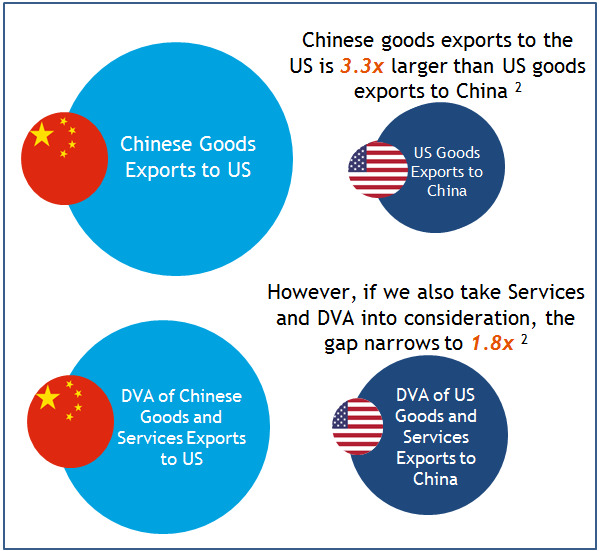
As the largest consumer of beer in the world, China consumed double the amount of beer than the United States (18 billion liters) in 20151. However, the market for domestic mass-production beer is trending towards saturation, as beer consumption has shown a continued decline since 20141.
The decline in beer sales is largely attributed to the decrease in the size of the main customer group. The blue collars used to be the main contributor of beer sales for a considerably long time. China’s rate of growth in fixed asset investment2 and value-added of the construction industry3 has been declining since 2015. In addition, with many low end manufacturing jobs moving from Pearl River Delta and Yangtze River Delta regions to Southeast Asia where production costs are lower, brands in categories that traditionally cater to blue-collar workers, such as instant noodle and beer, have been suffering from consumer demand falling off4. Nevertheless, Chinese Baijiu market has shown a strong growth momentum amidst a waning beer market. Enterprises above designated size (i.e. enterprises with an annual revenue of RMB20m and above) in the baijiu market have recorded sales revenue of RMB 565 billion in 2017, a 14.4% YoY increase, with profits soaring by 35.8% to RMB 102 billion5.
Mid to high-end Baijiu saw strong sales growth in the past two years, mainly driven by domestic consumption upgrade. The supply side reform started from 2015 pushed the price of cyclical goods upward and hence supported the recovery of cyclical industries. With these companies’ abilities to pay off debt improving, banks are reducing bad debts, which leads to a virtuous reflation cycle. While China’s manufacturing sector has been upgrading , consumer market has been undergoing an overall consumption upgrade at the same time. As there’s a close correlation between Baijiu consumption and economic prosperity, China’s economic growth are boosting high-end baijiu consumption.
From the second half of 2012 to 2015, Chinese Baijiu industry has undergone an adjustment period which lasted for around three-and-a-half years. Besides constraints from the macroeconomic environment, the central government’s crackdown on “three public consumptions” also played a role in Baijiu sales slump. Government consumption currently accounts for only 5% of the total Baijiu market, compared to 40% in 20126. Though government spending on Baijiu consumption declines significantly, personal consumption growth has driven the Baijiu industry’s recovery since 2016 as per capita disposable income keeps increasing.
Against the backdrop of consumption upgrades, we continue to remain bullish on premium Baijiu market. First, Baijiu has a high irreplaceability. It plays a pivotal role in China’s social culture and can only be replaced by few alternatives such as red/white wine. Second, premium Baijiu brands have high customer loyalty and rising Chinese cultural confidence will also contribute to promoting Baijiu consumption. Third, with a lot of weaker Baijiu brands and those with poor distribution going out of business, premium brands are faced with less competition. Fourth, tight supply due to capacity constraints drives average selling prices up, which will help improve profit margins.
In 2017, per capita disposable income in China rose 9% YoY to RMB 25,9747, compared to RMB 18,311 in 20138, with a cumulative growth of 41.8%. Despite the gains, China’s per capita disposable income only accounted for around 10% of the US’ ($39,155, about 255,000 yuan)9. We expect that there is still much room for growth in disposable income. Continuing consumption upgrade will further drive demands for high-end consumer goods, benefiting Baijiu market.
Akin to Baijiu industry, Macau gaming revenue used to rely on VIP segment and government consumption was a main source, but now mainland tourists are becoming the main consumer group and per capita gaming spending has also increased with an increase in their disposable income. We have noticed that casinos have raised the minimum bets in some mass-market tables, catering to tourists from mainland. The development of the Premium Mass Market may become the driving force for growth in gaming going forward.
[1] Source: Research and Markets, as of March 2017
[2] Source: National Bureau of Statistics of the People’s Republic of China, as of Jan 2018
[3] Source: National Bureau of Statistics of the People’s Republic of China, as of February 2018
[4] Source: Bain & Company, as of November 2016
[5] Source: China News, as of March 2018
[6] Source: chyxx.com, as of August 2017
[7] Source: National Bureau of Statistics of the People’s Republic of China, as of January 2018
[8] Source: China News, as of February 2014
[9] Source: Statista, as of July 2018
Disclaimer:
This document is based on management forecasts and reflects prevailing conditions and our views as of this date, all of which are accordingly subject to change. In preparing this document, we have relied upon and assumed without independent verification, the accuracy and completeness of all information available from public sources. All opinions or estimates contained in this document are entirely Zeal Asset Management Limited’s judgment as of the date of this document and are subject to change without notice.
There can be no assurance that any estimates of future performance of any industry discussed in this presentation can be achieved. The portfolio may or may not have current investments in the industry discussed. Any reference or inference to a specific industry listed herein does not constitute a recommendation to buy, sell, or hold securities of such industry. Please be advised that any estimates of future performance of any industry discussed are subject to change at any time and are current as of the date of this presentation only. Targets are objectives only and should not be construed as providing any assurance or guarantee as to the results that may be realized in the future from investments in the industry described herein.
Investments involve risks. You may lose part or all of your investment. You should not make an investment decision solely based on this information. If you have any queries, please contact your financial advisor and seek professional advice. This document is issued by Zeal Asset Management Limited and has not been reviewed by the Securities and Futures Commission in Hong Kong.



